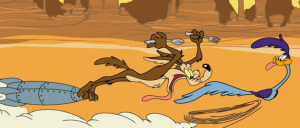I’ve decided to write blog posts to increase my presence on social networks so people learn about the services I can provide, i.e. team dynamic facilitation. In other words, I wish to start and support conversations where vulnerability and authenticity are present and sources of tangible results, significant actions, and creative projects.
I often notice that I have ideas on various topics that I believe useful, relevant, and meaningful, but when I start writing them down, I tense and feel like I’m shrinking. I begin suffering from the impostor syndrome. The symptoms: my heartbeat quickens, I feel like not being seen, even disappearing. Thus, it’s very difficult for me to write.
When I realized that, I stagnated until I began writing this article, which allows me to explore my sources of resistance.
The practical theory
The exploration of Bill Torbert’s triple-loop learning model (Action Inquiry, Berrett-Koehler Publishers) inspired me and helped me to shed light on the way I learn.
The first loop consists in changing tactics and behaviours in order to achieve our goal more effectively. Take the Coyote and Road Runner, what are the Coyote’s tactics to catch Road Runner?
The second loop consists in asking questions at the strategy and objective levels to become more efficient. With the same example of Coyote and Road Runner, here is the type of question Coyote would ask himself: “What if Road Runner was my friend?”
The third loop consists in asking questions about the legitimacy and integrity of our actions: why is it so important for me that this event occurs? Who I am? Who are the others for me? Within the context of Road Runner and Coyote, the latest could ask himself the following questions: what type of relationship do I want with Road Runner? Who am I in this relationship?
Practising the theory
Now, let’s apply this model to the difficulty I have writing blog posts or performing any other action demonstrating my peculiarity. Here are a few learnings I made or, at least, the questions that arose:
First loop: Writing blog posts is not easy, and someone else should be able to do it better than me. So, the best thing to do is hire someone or call upon a freelancer. I’ve tried writing in the morning, at night, using paper format instead of a computer. The result remained disappointing; each time, I felt my stomach tightening, which drained all the energy I had about writing.
Second loop: If writing was an ally instead of a chore, what would be different? I decided to start writing this article while welcoming and thanking my inner voice, which was telling me that what I felt like sharing was unworthy. This allowed me to create an inner space and lift the weight upon my shoulders.
Third loop: What is the sense I want to give to writing? Why is it so important for me to be on social networks? Can I do without it or try to find other means of diffusion? I’m learning that my greatest resistance is to accept who I really am and proclaim my peculiarity with conviction.
So what?
Another thing that I’ve learned, is that no loop is better than the other, and browsing through all three loops could be very useful. This enriching experience allowed me to notice that I remained in the first loop for quite a while. Breathing, calming me down, welcoming my ego and my judgments as well as listening to my body (contractions, signs of impatience, heartbeat) also allowed me to cover the other loops.
Finally, if I establish connections with team facilitation, I notice that vulnerability is an essential item in learning and that it creates the conditions for growth. Diane Musho Hamilton calls it powerful vulnerability (Everything is workable—A zen approach to conflict resolution, Shambhala).
I’m curious to know how you could become vulnerable and authentic to create learning opportunities from the second and third loops with people who are important to you.






No Comment